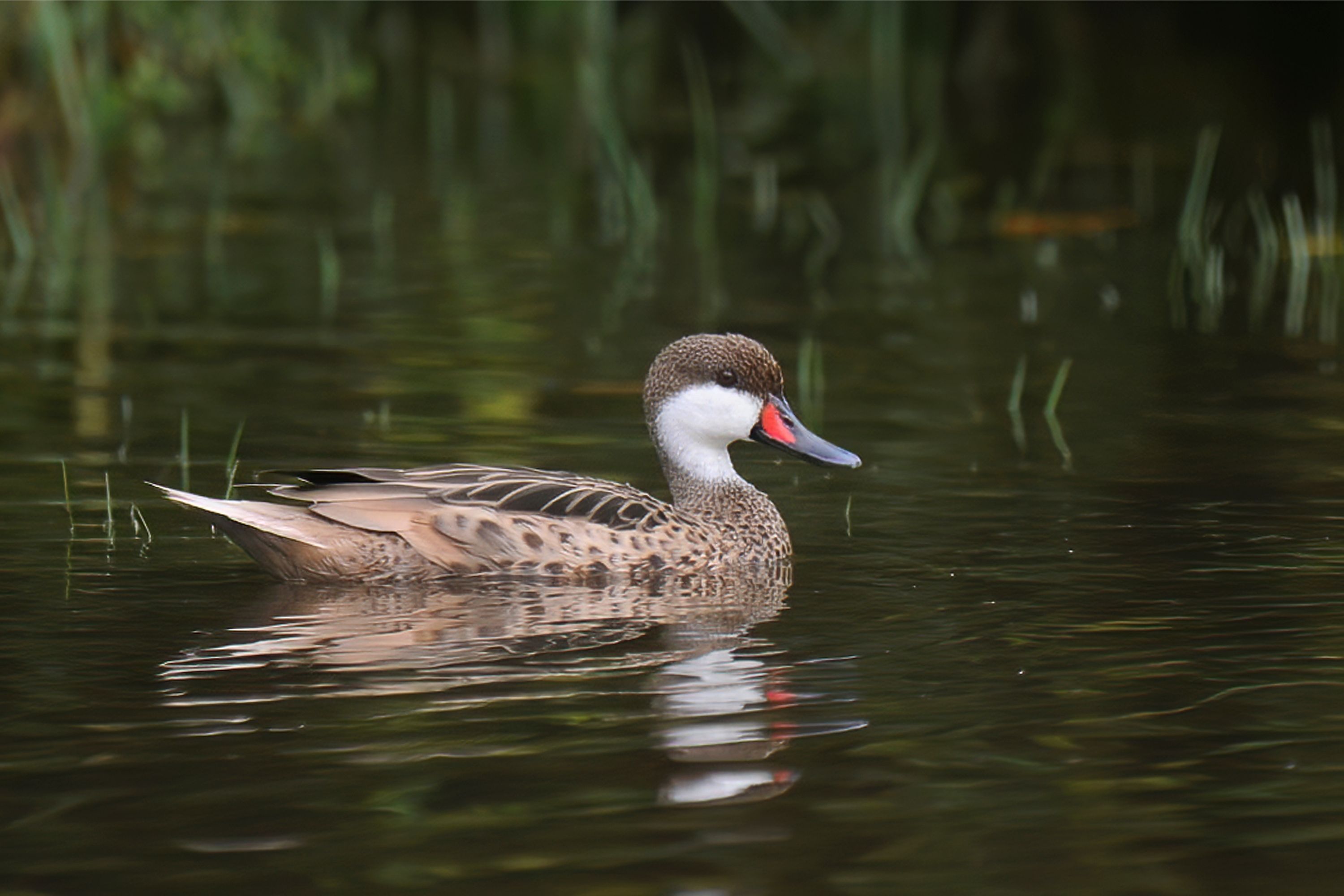White-cheeked pintail
(Anas bahamensis)

Description
The white-cheeked pintail (Anas bahamensis), also known as the Bahama pintail or summer duck, is a species of dabbling duck. It was first described by Carl Linnaeus in his landmark 1758 10th edition of Systema Naturae under its current scientific name. It is found in the Caribbean, South America, and the Galápagos Islands. It occurs on waters with some salinity, such as brackish lakes, estuaries and mangrove swamps. Like many southern ducks, the sexes are similar. It is mainly brown with white cheeks and a red-based grey bill (young birds lack the pink). It cannot be confused with any other duck in its range. The white-cheeked pintail feeds on aquatic plants and small creatures obtained by dabbling. The nest is on the ground under vegetation and near water. It is popular in wildfowl collections, and escapees are frequently seen in a semi-wild condition in Europe. A leucistic (whitish) variant is known in aviculture as the silver Bahama pintail.
Taxonomic tree:







